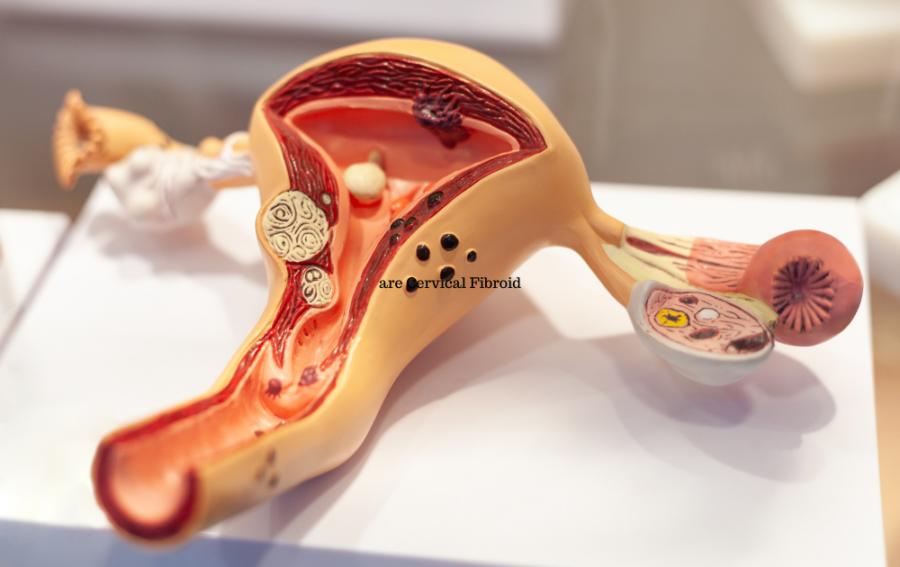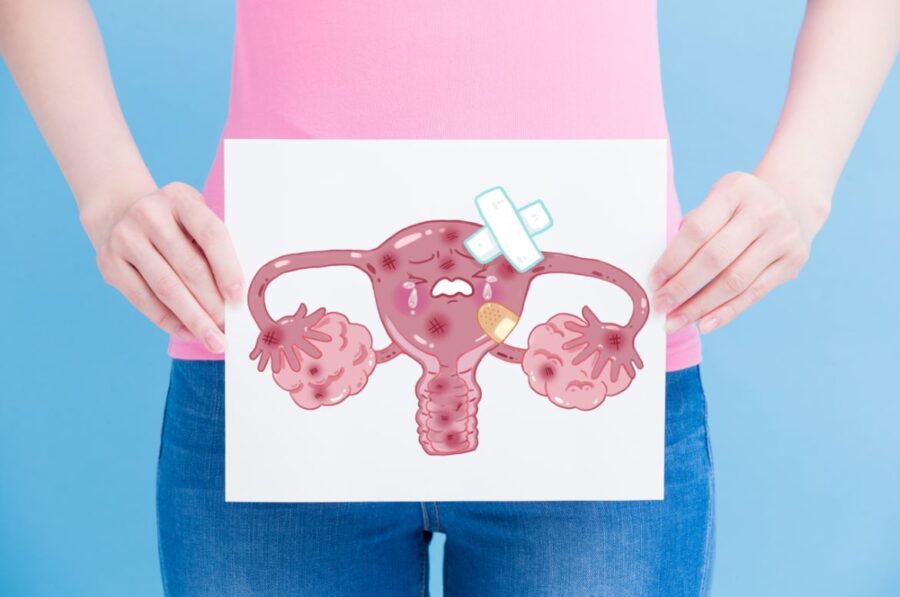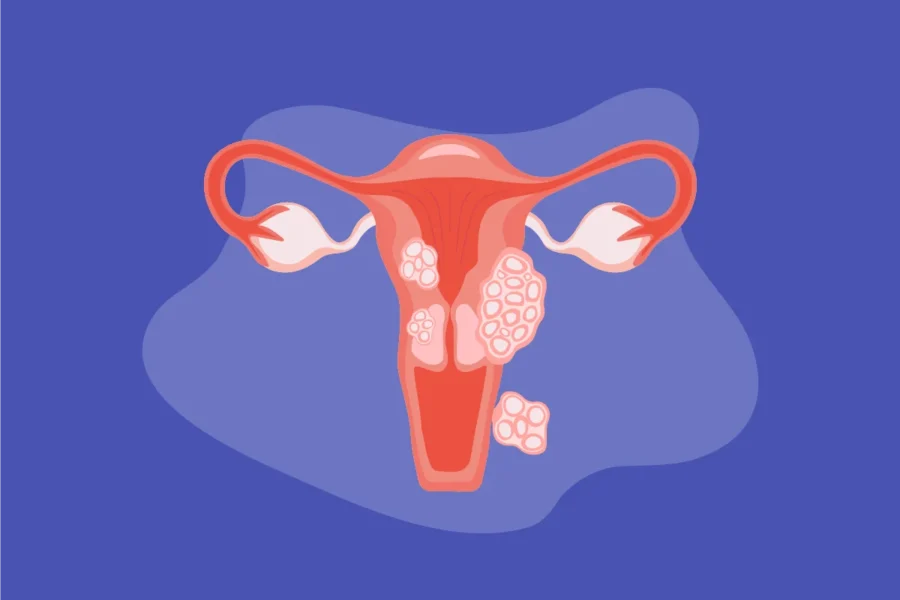The uterus is the most essential part of the female reproductive system in a woman’s body. Fibroids are growths that can take place in one or more parts of this organ. The article provides information about different types of fibroids, their classification, and where they grow.
What is a Fibroid?
A fibroid is a benign (non-cancerous) tumor that grows in the wall of the uterus. Fibroids can vary from tiny (less than 1 cm in diameter) to large (more than 5 cm in diameter). They can grow singly or in clusters. Fibroids are also known as myomas, leiomyomas, or fibromyomas.
It is estimated that up to 80% of women will develop one or more fibroids during their lifetime. However, not all women with fibroids will experience symptoms. For those who do, the most common symptom is heavy menstrual bleeding. Other symptoms may include pelvic pain and pressure, pain during intercourse, and urinary frequency or urgency.
The exact cause of fibroids is unknown. However, they are thought to be influenced by hormones, particularly estrogen and progesterone. This is why fibroids are more common during childbearing years (ages 20-40) when these hormone levels increase. Fibroids typically shrink after menopause due to lower hormone levels.
Several treatment options are available for symptomatic fibroids, including medication, surgery, and uterine artery embolization (UAE). The best treatment option depends on the size and location of the fibroid(s) and the woman’s age and fertility desires.

Types of Fibroids
There are four main types of fibroids, which are classified according to where they grow:
- Intramural fibroids grow within the muscular walls of the uterus and are the most common type of fibroid.
- Subserosal fibroids grow on the outer surface of the uterus.
- Submucosal fibroids grow in the inner lining of the uterus.
- Pedunculated fibroids grow from a stalk attached to the outside or inside of the uterus.
Most fibroids are asymptomatic, but some can cause heavy bleeding, pain, and pressure on surrounding organs. Treatment depends on the size and location of the fibroid(s) and can range from medication to surgery.
Where Do Fibroids Grow?
There are four main types of fibroids: submucosal, intramural, pedunculated, and subserosal.
Submucosal fibroids grow in the inner lining of the uterus and can protrude into the uterine cavity. They are often associated with heavy bleeding during menstruation.
Intramural fibroids are located within the muscular wall of the uterus and can make the uterus feel larger than usual.
Pedunculated fibroids grow on stalks or peduncles attached to either the uterus’s outer surface or inner lining. These types of fibroids can become very large and may twist or turn, which can cause pain.
Subserosal fibroids grow on the outer surface of the uterus. They may become so large that they press on other organs in the pelvis, such as the bladder or rectum.
Why are Fibroids Problematic?
Fibroids are non-cancerous growths of the uterus that can cause heavy bleeding, pain, and fertility problems. It’s estimated that as many as 80% of women will develop fibroids at some point in their lives, though not all women will experience symptoms.
Fibroids are most commonly found during a woman’s childbearing years and usually shrink after menopause. However, they can occasionally grow larger and cause serious health problems.
The main symptom of fibroids is heavy menstrual bleeding, which can lead to anemia. Fibroids can also cause pain during sex, urinary frequency or urgency, and constipation. In severe cases, they can lead to infertility or miscarrying a pregnancy.
Once fibroids have been diagnosed, several treatment options are available depending on the severity of your symptoms.

Embolization Surgery for Fibroids
Embolization surgery for fibroids is a minimally invasive procedure that can be used to treat symptomatic uterine fibroids. This type of surgery involves blockage of the blood supply to the fibroid, which causes the fibroid to shrink.
Embolization surgery can be performed outpatient and does not require general anesthesia. Recovery from this type of surgery is typically quicker than traditional open surgery, and there is less risk of complications.
If you are considering embolization surgery for your fibroids, be sure to discuss all risks and benefits with your doctor beforehand.
Myomectomy Surgery for Fibroids
If you have fibroids causing pain or other problems, your doctor may recommend surgery to remove them. One type of surgery is a myomectomy, which involves removing the fibroids while leaving the healthy tissue of your uterus intact.
Myomectomy can be performed using several different techniques, including:
- Laparoscopic surgery: This minimally invasive option uses small incisions and a camera to guide the surgeon.
- Robotic surgery: This is also a minimally invasive option that uses small incisions and a robot to assist the surgeon.
- Hysteroscopic surgery: This procedure is performed through the vagina and cervix using a scope to visualize the uterus.
- Open surgery: This is the most invasive option and involves making a large incision in the abdomen.
After having a myomectomy, you may experience some side effects, such as bleeding, cramping, and infection. You may also be at risk for developing new fibroids or for your existing fibroids to grow back. However, myomectomy can relieve symptoms and allow you to keep your uterus if you want to become pregnant.
Get Relief From Painful Menstrual Cycles With Birth Control Pills
If you suffer from painful menstrual cycles, you may want to consider birth control pills as a form of treatment. Birth control pills can help to regulate your hormones and make your periods less painful. Many birth control pills are available, so you must speak to your doctor about which type is right for you.

Conclusion
There are many different types of fibroids, each with unique symptoms and treatment options. While some fibroids can be managed with over-the-counter medications or home remedies, others may require surgery. If you think you may have a fibroid, it’s essential to see your doctor so they can diagnose the type and determine the best course of treatment.
Also read: Breast Cancer: Everything You Need To Know

